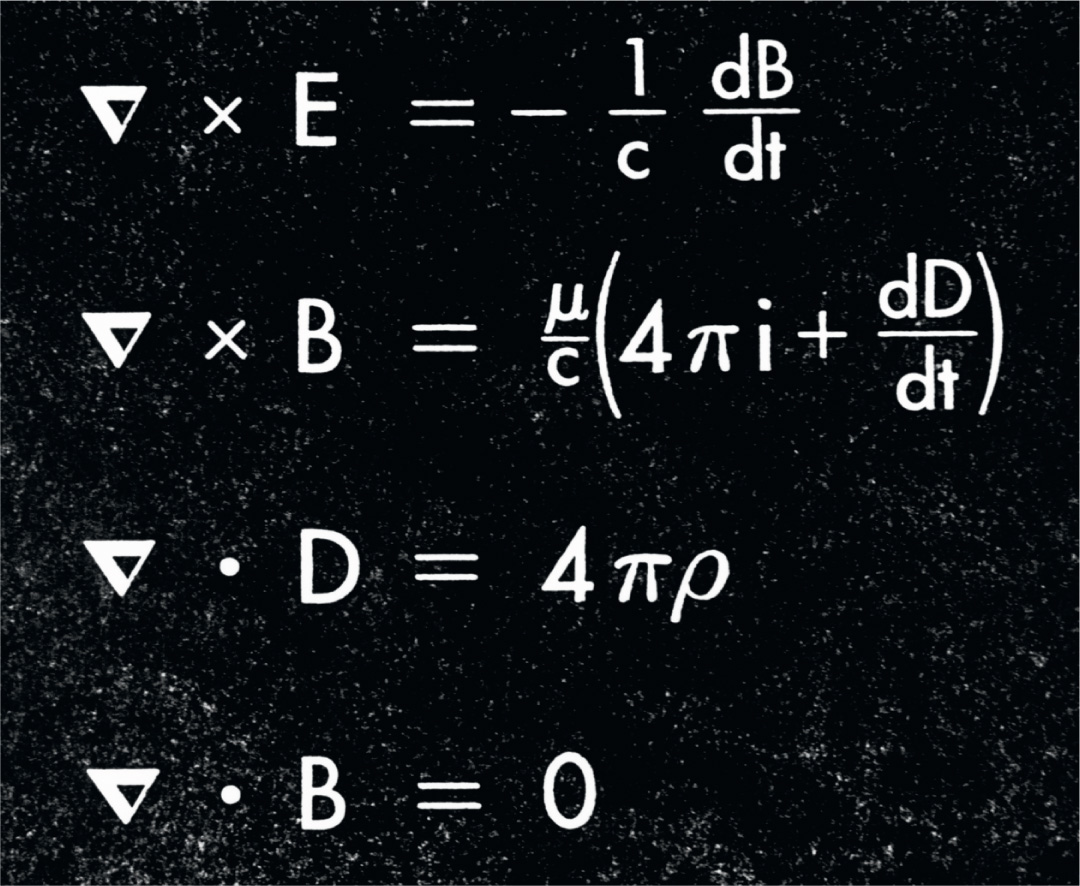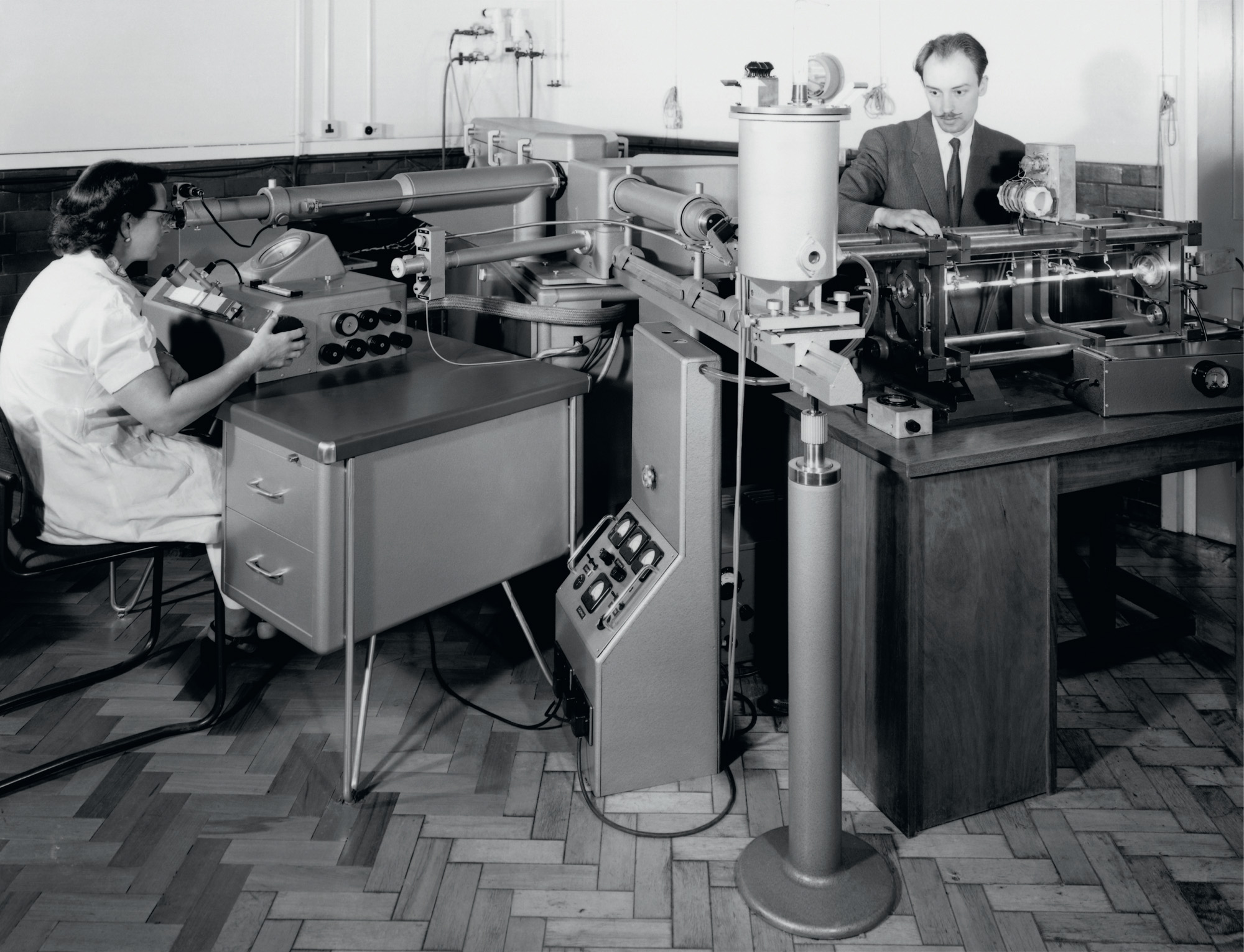
Maxwell’s equations, containing the constant c, which is the speed of light or any other electromagnetic radiation.
Although the speed of light had been known to be finite since the work of Ole Rømer (see here), it was only in the second half of the nineteenth century that the speed was measured with precision. The technique was pioneered by the French physicist Hippolyte Fizeau, and refined by his countryman Léon Foucault, who measured a value within 1 per cent of modern measurements in 1862.
Fizeau made the first accurate ground-based measurement of the speed of light at the end of the 1840s. He used a rotating metal wheel in which gaps had been cut, like the battlements of a castle. A beam of light was fired through a gap in the wheel and along a distance of 8 kilometres between Montmartre and the hilltop of Suresnes, off a mirror and back through the next gap in the toothed wheel. This worked only if the wheel was rotating at just the right speed for the next gap to be in place for the light to get through. By adjusting the speed of the wheel until this worked, Fizeau was able to measure how long it took for light to complete the journey, and thereby get a measure of the speed of light of 313,300 kilometres per second, which is within 5 per cent of the modern determination. He also showed that light travels more slowly through water than through air, which is a key prediction of the wave model. The rival particle model predicts that light travels more rapidly in water.
Foucault also used an experimental method involving bouncing light beams around, but based on a rotating-mirror concept devised by Dominique-François Arago. This technique involved light being bounced from a rotating mirror on to a stationary mirror then back to the rotating mirror. While the light is travelling, the rotating mirror has moved on a little, so the beam of light is deflected by an angle which depends on the distance between the mirrors, the speed of light, and the speed with which the mirror is rotating. By measuring the angle of deflection, Foucault was able to confirm that light travels more slowly in water than in air and then, in 1862, to measure the speed of light as 298,005 kilometres per second. The modern value is 299,792.458 kilometres per second.
This had far-reaching implications. Exactly at the time Foucault was carrying out these experiments, the Scot James Clerk Maxwell was developing a mathematical theory of electromagnetism, building from Faraday’s work (see here). He found a set of equations that describe all the interactions between electricity and magnetism, and which include a mathematical description of electromagnetic waves. The equations automatically included a constant (now labelled c), which is the speed with which these waves travel through the air. (This was not something that Maxwell put in, it came out of the calculation without being looked for.) That speed was the same as the speed Foucault had measured for light. Maxwell wrote: ‘This velocity is so nearly that of light that it seems we have strong reason to conclude that light itself (including radiant heat and other radiations, if any) is an electromagnetic disturbance in the form of waves propagated through the electromagnetic field according to electromagnetic laws.’ The ‘radiant heat’ he referred to is, of course, infrared radiation (see here), and the mention of ‘other radiation, if any’ proved prophetic (see here).

However, the equations contained no mention of the speed of the source of the waves, or the speed of the observer measuring them. They seemed to be saying that any observer, moving at any speed, would measure the same speed for any light waves, whatever the source of those waves. This puzzled many people, and strenuous efforts were made to find differences in the speed of light for beams moving in different directions relative to the moving Earth (see here). These efforts were unsuccessful, proving that Maxwell’s equations were right. Albert Einstein, jumping off from those equations and ignoring the experiments (which he may not even have known about at the time), took the discovery at face value, and made it the cornerstone of his special theory of relativity, published in 1905.
All this is so important that, in 1983, instead of measuring the speed of light in terms of the number of metres travelled in a second, the metre itself was redefined by the Conférence Générale des Poids et Mesures (General Conference on Weights And Measures) as ‘the length of the path travelled by light in vacuum during a time interval of 1∕299792458 of a second’, setting the value of the speed of light at 299,792,458 metres per second by definition.
